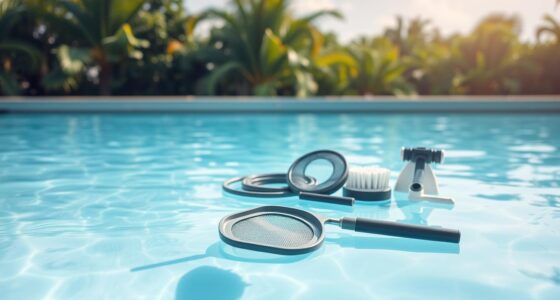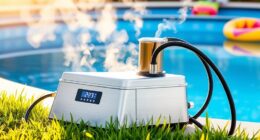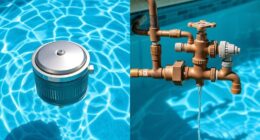Did you know that approximately 60% of pool owners skip essential maintenance tasks during rainy weather? This startling statistic highlights a common misconception: many believe that bad weather makes servicing pools unsafe or unnecessary. However, understanding the safety practices and considerations for pool maintenance during rainy days is crucial for protecting your investment and ensuring safe usage once the clouds clear. In this section, we’ll explore why servicing your pool in inclement conditions can actually prevent larger issues down the line.
Key Takeaways
- Don’t overlook pool maintenance during rainy days.
- Safety practices are essential for servicing pools in inclement weather.
- Regular maintenance helps prevent long-term damage.
- Assessing conditions before servicing can ensure your safety.
- Neglecting maintenance can lead to costly repairs.
Introduction to Pool Maintenance in Rainy Weather
As a pool owner, understanding the importance of maintenance during rainy weather is crucial. Rainfall can significantly affect your pool’s condition, creating challenges that require immediate attention. Many people assume that pool maintenance can be put on hold when the skies open up, but neglecting these responsibilities can lead to serious issues.
Heavy rainfall not only dilutes chemical balances in the water but can also strain your pool’s liner. This can lead to potential leaks or structural damages, which can be costly to repair. Knowing how to manage your pool care routine during inclement weather will help preserve your investment.
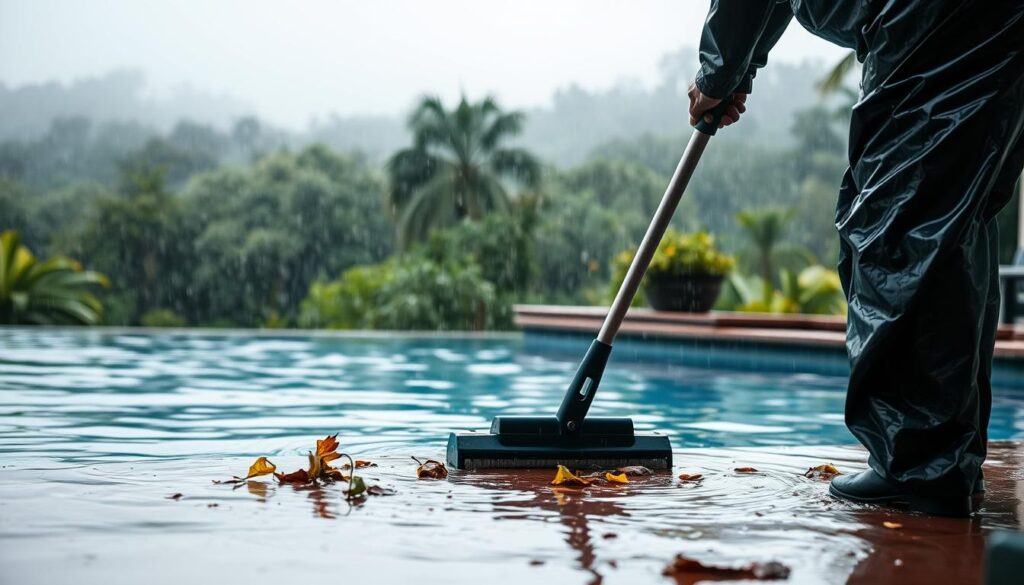
Routine inspections and proper adjustments are necessary, even when the weather doesn’t cooperate. Staying proactive ensures your pool remains in optimal condition regardless of the climate. Emphasizing the importance of maintenance, you can keep water clarity and chemical levels balanced, minimizing complications during and after rainy spells.
Understanding the Impact of Heavy Rain on Pools
Heavy rain can have a significant impact on your swimming pool, leading to complications that may arise if left unaddressed. Understanding these effects helps in maintaining your pool’s condition and ensures a safe recreational environment for you and your family.
The Connection Between Rain and Pool Liner Damage
When heavy rain occurs, excess water can create hydrostatic pressure beneath the pool liner. This condition often leads to pool liner damage, resulting in bubbling, tearing, or even the liner completely floating away. Addressing these issues promptly is crucial to prevent costly repairs down the line.
How Excessive Rain Affects Water Chemistry
Rainwater can dilute the chemicals in your pool, significantly impacting water chemistry. A change in water chemistry often results in cloudy water and can disturb the pH levels. Maintaining balanced water chemistry during periods of heavy rain is essential to ensure safe swimming conditions.

Can Heavy Rain Damage My Pool Liner?
Heavy rain poses a significant threat to your pool liner, creating conditions that can lead to various risks. Understanding these risks is crucial for effective maintenance and prevention of long-term damage. By recognizing the signs of potential issues, you can take steps to protect your investment.
Signs Your Pool Liner May Be at Risk
After heavy rain, keep an eye out for the following signs that indicate your pool liner may be compromised:
- Wrinkling: Any noticeable folds or creases could signify the liner is adjusting to hydrostatic pressure.
- Floating: If the liner begins to detach from the wall, it may be a result of water collecting behind it.
- Bubbling: Air pockets trapped beneath the liner can create bubbling, leading to further damage if ignored.
Potential Long-term Effects of Neglected Maintenance
Neglecting maintenance during rainy periods can result in severe, long-term consequences. Heavy rain damage may escalate into more serious issues like:
- Severe water chemistry imbalances that can lead to algae growth.
- Increased repair costs due to extensive liner damage.
- Decreased lifespan of the pool liner, requiring premature replacement.
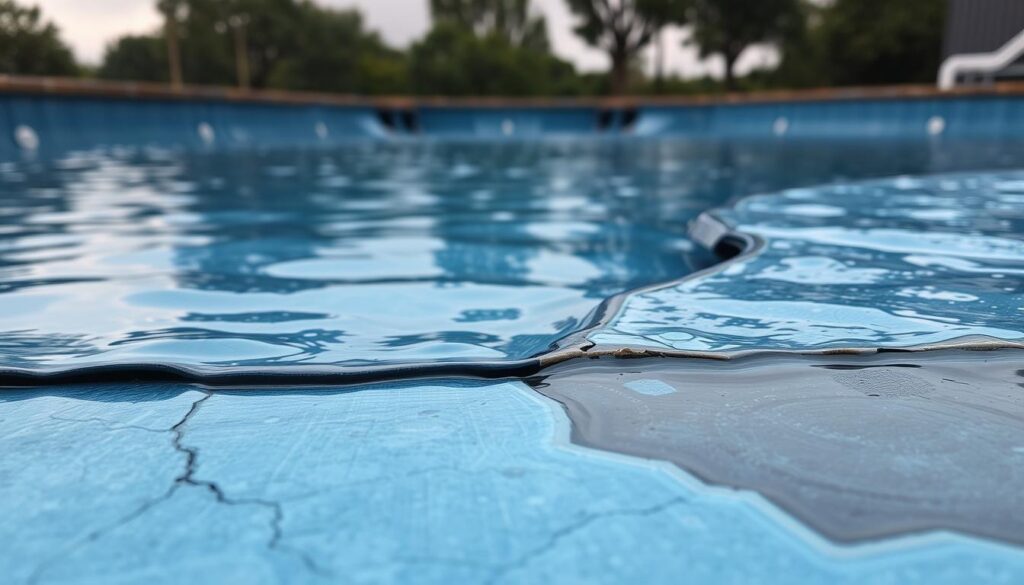
should-you-service-pools-on-a-rainy-day
When contemplating whether to service pools during a rainy day, the most crucial step involves a thorough assessment of the conditions. Various factors influence the safety and effectiveness of pool maintenance in such weather. Considerations such as rainfall intensity, visibility, and the saturation level of the surrounding ground play a significant role in your decision-making process.
Why It’s Important to Assess Conditions First
Before determining if you should service pools, prioritize a rainy day assessment. Taking the time to check the following conditions can help ensure a safe and efficient maintenance routine:
- Rainfall Amount: Evaluate how much rain has fallen. Excess rain can lead to oversaturated soil and potential flooding.
- Visibility: Assess how clearly you can see. Poor visibility can hinder your ability to spot issues in the pool or its surroundings.
- Ground Saturation: Check how wet the ground is. Saturated ground can create instability, making maintenance work hazardous.
By carefully evaluating these conditions to check, you can make an informed decision about servicing the pool. This careful approach reduces risks and helps maintain the integrity of your pool system even during inclement weather.

Consequences of Ignoring Rainy Day Maintenance
Failing to maintain your pool during rainy days can lead to significant ramifications. Ignoring maintenance invites problems that affect not just the aesthetics of your pool but its functionality and safety as well. Two major issues arise from neglecting maintenance in wet weather: hydrostatic pressure buildup and cloudy water. Understanding these consequences is essential for every pool owner.
Hydrostatic Pressure Under the Liner
Hydrostatic pressure occurs when rainwater accumulates beneath the pool liner. This pressure can cause serious damage if not addressed promptly. Over time, the liner may shift or even become dislodged, leading to costly repairs. Furthermore, prolonged pressure can impact the pool’s structural integrity, potentially requiring extensive interventions to fix.
Cloudy Water and Debris Buildup Issues
Rainwater often introduces contaminants and debris into your pool, contributing to cloudy water. Without regular maintenance, these particles can multiply, resulting in unsanitary conditions. Cloudy water not only detracts from your pool’s appearance but also poses health risks for swimmers. Ensuring regular upkeep during rain helps prevent these issues, making your pool safe and inviting.
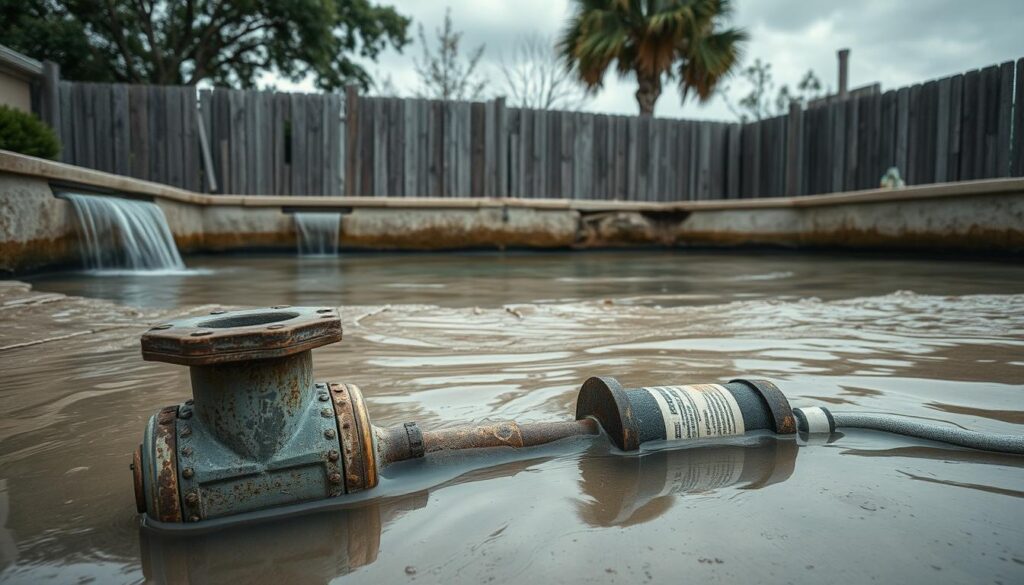
Best Practices for Servicing Pools During Rain
Servicing pools during rainy weather requires special attention. While rainy days can present challenges, it’s essential to follow best practices to ensure your pool remains in optimal condition. Proper inspection techniques tailored for wet conditions, along with effective methods for balancing water chemistry, can help maintain a safe and clean swimming environment.
Inspection Techniques for Wet Conditions
When inspecting your pool in wet conditions, consider the following techniques:
- Check for visible debris: Leaves, branches, and other materials may accumulate in the pool and on its surfaces.
- Assess the water level: Heavy rain can affect the water level, leading to potential overflows. Make necessary adjustments.
- Look for signs of liner damage: Wet conditions can make liner issues more apparent. Check for wrinkles or tears that may need attention.
- Evaluate the surrounding area: Ensure that drainage around the pool is functioning correctly to prevent excess water buildup.
Tips for Balancing Water Chemistry
Maintaining proper water chemistry during rainy days is crucial in preventing water quality issues. Follow these tips:
- Test regularly: Use a reliable testing kit to check for pH, alkalinity, and chlorine levels.
- Adjust chemicals as needed: Rain can dilute chemicals, so be prepared to add more to maintain balance.
- Monitor for algae growth: Cloudy conditions can promote algae; consider adding algaecide if necessary.
- Shock the pool after heavy rains: This step helps reset water chemistry and combat contaminants.
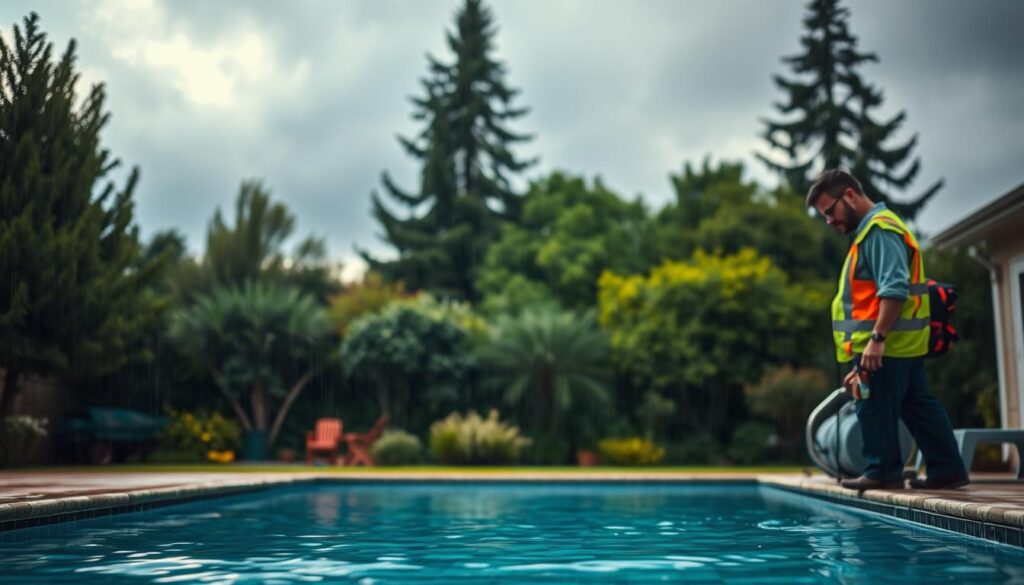
How to Spot Signs of a Floating Pool Liner
Recognizing the signs of a floating pool liner can save you from significant repair costs and longer-term damage. You’ll want to keep an eye out for specific indicators, such as wrinkles and bubbling, which reflect underlying issues that need addressing. A proactive approach to spotting floating liner will help ensure your pool remains a safe and inviting space.
Identifying Wrinkles and Bubbling
When inspecting your pool, look closely for any wrinkles or bubbles in the liner. These irregularities may not seem alarming initially but could signal that water is trapped beneath the liner, leading to potential tears and detachment over time. Pay attention to areas around the pool’s edges where the liner meets the coping; this is commonly where signs of damage can manifest.
Testing the Liner with a Pool Brush
Another effective method for assessing your pool liner is by testing with a pool brush. Gently brush the surface of the liner, particularly in suspected areas of floating. If you notice an unusual amount of give or movement under the brush, this could indicate that water has gotten underneath. Keeping an eye on these conditions is crucial for maintaining the overall integrity of your pool liner.
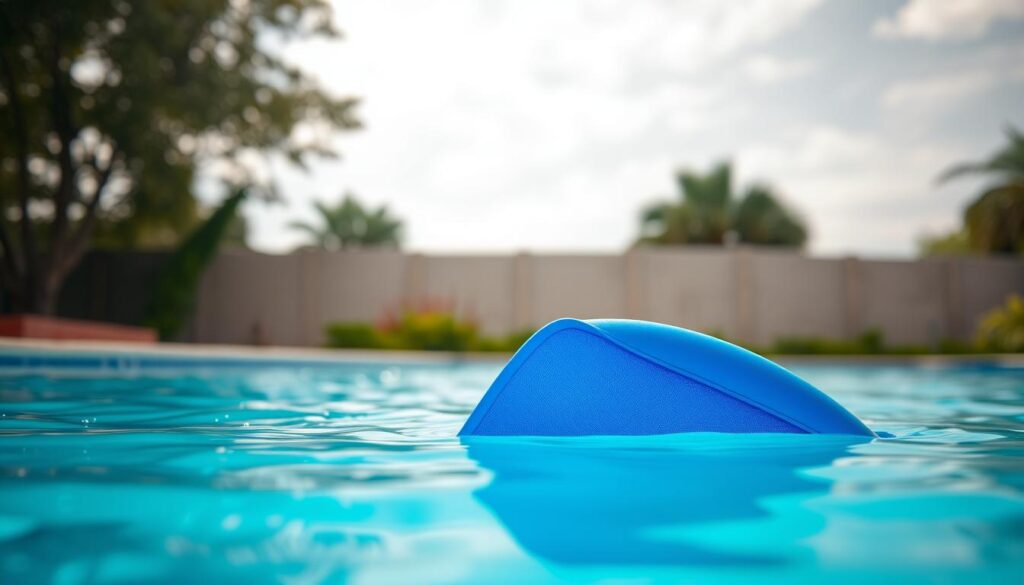
| Signs of Damage | What to Look For | Potential Consequences |
|---|---|---|
| Wrinkles | Irregular folds in the liner | Possible tearing or detachment from the wall |
| Bubbling | Air pockets beneath the surface | Water intrusion leading to long-term damage |
| Movement under brushing | Excessive give during testing | Risk of more extensive repairs needed |
What Steps to Take if Rainwater Gets Under Your Pool Liner
If you find yourself facing the issue of rainwater getting trapped under your pool liner, addressing it quickly is essential to avoid significant damage. Inspecting your pool should be your first step. Look for visible signs of distortion or bubbles in the liner, which can indicate that rainwater has accumulated. Taking prompt action can make a considerable difference in preventing damage to your pool structure.
Immediate Actions to Prevent Damage
Start by assessing the water level in your pool. If the water is higher than your usual level, it may indicate that rainwater under the liner is causing issues. Follow these steps to manage the situation:
- Drain excess water to minimize pressure on the liner.
- Remove any debris that may have collected on top of the liner, as this can retain moisture.
- Check for any tears or leaks in the liner that could worsen if not promptly addressed.
While these initial steps can help in preventing damage, the situation may require further evaluation.
When to Call a Professional for Help
If you cannot resolve the issue by following the steps outlined, seeking professional help becomes necessary. Professionals possess the expertise and tools to properly inspect your pool and address complications effectively. Do not hesitate to reach out if you notice significant pooling of water or if the liner appears compromised. Taking these precautions ensures the longevity and integrity of your pool.
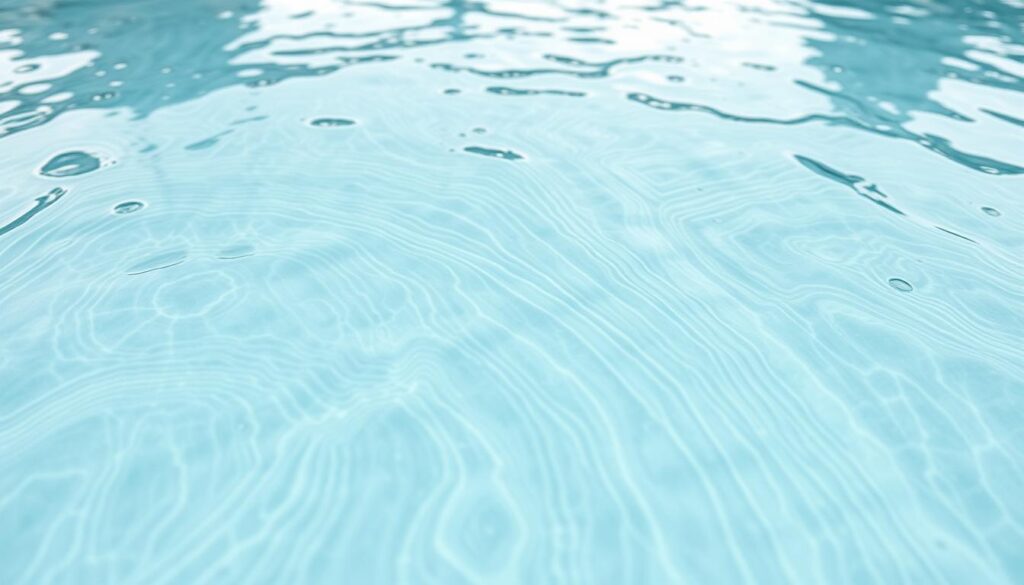
Preventive Measures to Protect Your Pool During Rain
Effective preventive measures play a crucial role in protecting your pool during rainy weather. Implementing proper drainage solutions around your pool helps prevent groundwater accumulation that can cause significant damage. Furthermore, making routine inspections and maintenance checks ensures that potential issues are identified early, allowing you to take prompt action.
Proper Drainage Solutions Around Your Pool
Establishing proper drainage around your pool is essential for mitigating the effects of heavy rain. Effective drainage solutions include the installation of French drains, channel drains, and grading the landscape to direct water away from the pool. These measures significantly decrease the risk of water pooling, which can lead to structural problems over time.
Routine Inspections and Maintenance Checks
Routine inspections help identify any wear or damage that could worsen during rainy conditions. You should check for cracks, leaks, or loose tiles around the pool area and ensure that skimmers and filters are functioning correctly. Regular maintenance checks contribute to the longevity of your pool, making it easier to manage during inclement weather.
| Preventive Measures | Description |
|---|---|
| French Drains | Redirects water away from pool area to prevent flooding. |
| Channel Drains | Collects surface water, preventing accumulation around the pool. |
| Landscape Grading | Shapes terrain to promote proper water flow away from the pool. |
| Routine Inspections | Regular checks for damage, leaks, or wear and tear. |
| Filter Maintenance | Ensures clean water flow and proper chemical balance. |
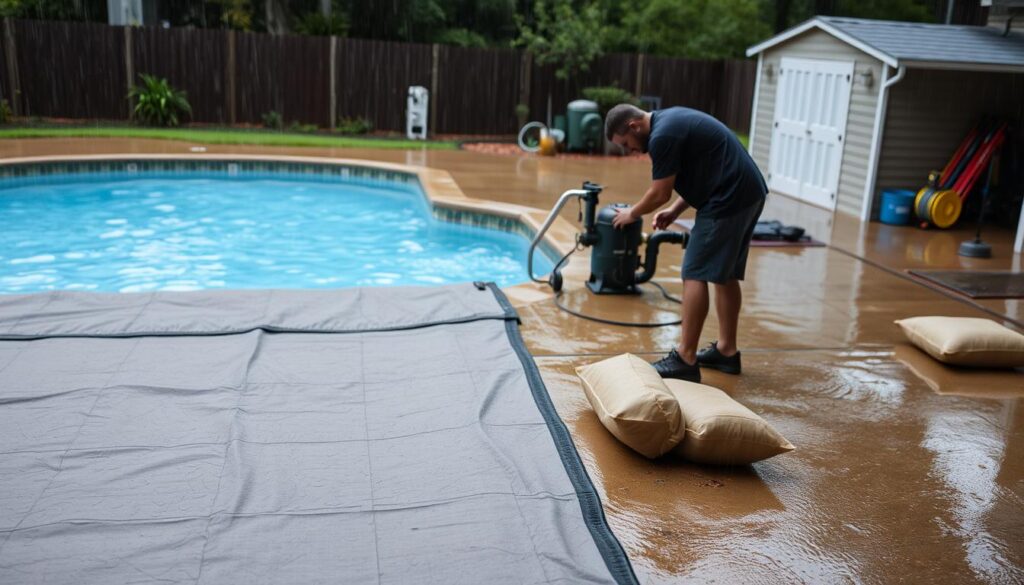
Importance of Professional Pool Services
When it comes to maintaining your pool’s condition, relying on professional pool services can make a significant difference. The expertise of trained technicians allows them to accurately assess and address issues that may not be immediately visible. Their thorough understanding of pool systems means efficient diagnosing issues, ensuring your pool remains a safe and enjoyable environment.
How Experts Can Diagnose and Repair Issues
Professional pool services are equipped with the necessary tools and knowledge to pinpoint underlying problems within your pool system. From leaks to equipment malfunctions, their experience allows them to quickly diagnose issues and recommend effective solutions. This proactive approach not only helps prevent small problems from escalating into costly repairs but also enhances the overall longevity of your pool.
Benefits of Scheduling Regular Pool Maintenance
Engaging in regular maintenance offers various advantages for pool owners. Consistent check-ups help maintain optimal water chemistry, reducing the risk of algae growth and ensuring a safe swimming experience. Furthermore, regular maintenance supports the sustained health of your pool’s equipment, which can save you time and money in the long run. Trusting the professionals for these routine services grants you peace of mind, knowing your pool is in capable hands.
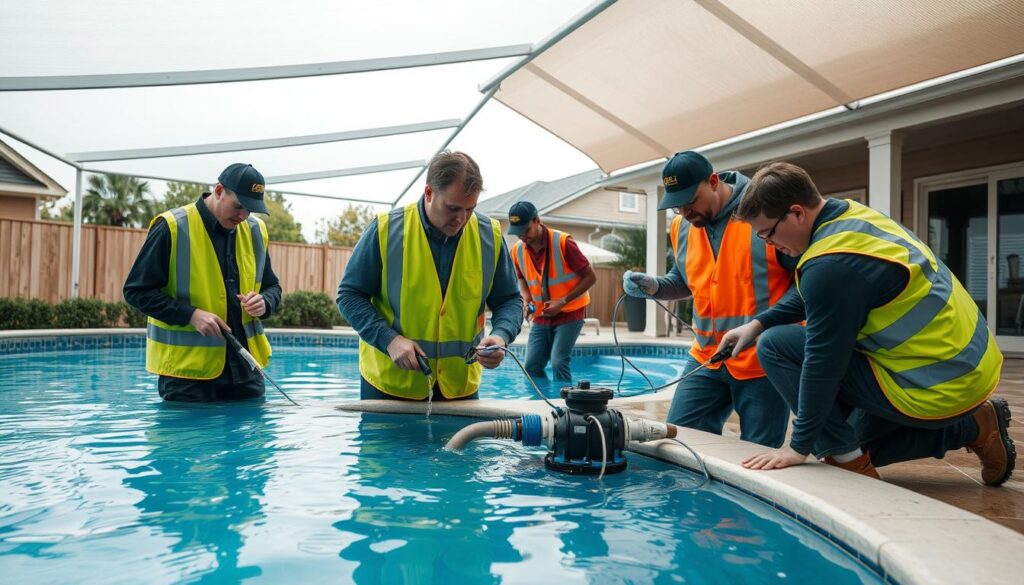
Conclusion
Understanding how to ensure servicing pools safety during rainy days is crucial for maintaining the integrity of your swimming oasis. By implementing effective maintenance strategies, you can navigate the unique challenges that inclement weather presents. This proactive approach not only helps protect your pool from potential damage but also ensures a safe and inviting swimming environment for family and friends.
Neglecting pool maintenance during rainy days can lead to various issues such as structural damage and water chemistry imbalances. By taking the time to assess conditions and apply best practices, you can minimize risks and enjoy your pool year-round. Remember to stay informed about the signs that may indicate underlying problems and to reach out to professionals if issues arise.
In summary, embracing a knowledgeable and proactive stance regarding pool maintenance during rainy days will safeguard your investment and enhance your overall pool experience. Your commitment to servicing pools safety ensures you can make the most of your pool, regardless of weather conditions.


